Clip-in hair extensions are one of the easiest ways to add length, volume, or color to your natural hair-no glue, no sew-ins, no salon appointment needed. But if you’ve ever wondered whether you can blow-dry, curl, or flat-iron them, you’re not alone. The short answer? Yes, you can-but only if they’re made of human hair and you take the right steps to protect them.
Not All Extensions Are Created Equal
The biggest mistake people make is treating every clip-in the same. There are two main types: synthetic and human hair. Synthetic extensions are made from plastic fibers that melt under heat. If you run a flat iron over them, you’ll get sticky, ruined strands that look like burnt spaghetti. They can’t handle temperatures above 180°F (82°C), and even a low-heat setting on a styling tool can damage them.Human hair extensions, on the other hand, behave just like your own hair. They can be curled, straightened, and blow-dried-up to a point. Most quality human hair extensions are made from Remy or virgin hair, which means the cuticles are intact and aligned in one direction. This makes them more durable and heat-resistant, often able to handle up to 450°F (232°C). But that doesn’t mean you should crank your iron to max and go wild.
How Heat Affects Human Hair Extensions
Even human hair can get damaged by too much heat. Every time you apply heat, you’re stripping away moisture and weakening the hair’s structure. Over time, extensions become brittle, frizzy, or start shedding. You might notice the ends looking dry or split, or the color fading faster than usual. A study from the International Journal of Trichology found that repeated heat exposure above 350°F (177°C) caused significant protein loss in human hair samples within just 10 uses.That’s why professionals recommend keeping your styling tools between 300°F and 350°F (149°C-177°C) when working with extensions. Anything hotter than that is asking for trouble-even if the box says it’s "heat-resistant."
What Tools Are Safe to Use
You can safely use these on human hair clip-ins:- Flat irons (with temperature control)
- Curling wands or irons
- Blow dryers (with a cool shot setting)
- Hot rollers (if they’re adjustable)
Avoid these:
- Steam curlers (too much moisture weakens bonds)
- High-heat styling tools without temperature control
- Chemical treatments like relaxers or color removers
And never use a hot tool on synthetic extensions unless the manufacturer explicitly says it’s safe. Most don’t.
Step-by-Step: How to Style Clip-Ins Without Ruining Them
If you’re using human hair extensions and want to style them safely, follow this routine:- Start with clean, dry extensions. Never apply heat to wet or damp extensions-they’re more prone to breakage.
- Brush them gently with a wide-tooth comb or a detangling brush before styling. Tangles can cause uneven heat distribution and snags.
- Apply a heat protectant spray designed for human hair. Look for ingredients like argan oil, keratin, or panthenol. Skip silicone-heavy sprays-they build up and make hair look greasy.
- Set your tool to 320°F (160°C). If you have fine or color-treated natural hair, stick to 300°F. Extensions don’t need high heat to look good.
- Style in small sections. Work slowly and don’t hold the tool in one spot for more than 5-8 seconds.
- Let the extensions cool completely before clipping them into your natural hair. Heat can make the clips warp or loosen over time.
- After styling, store them flat or on a wig stand. Don’t toss them in a drawer or hang them by the clips.
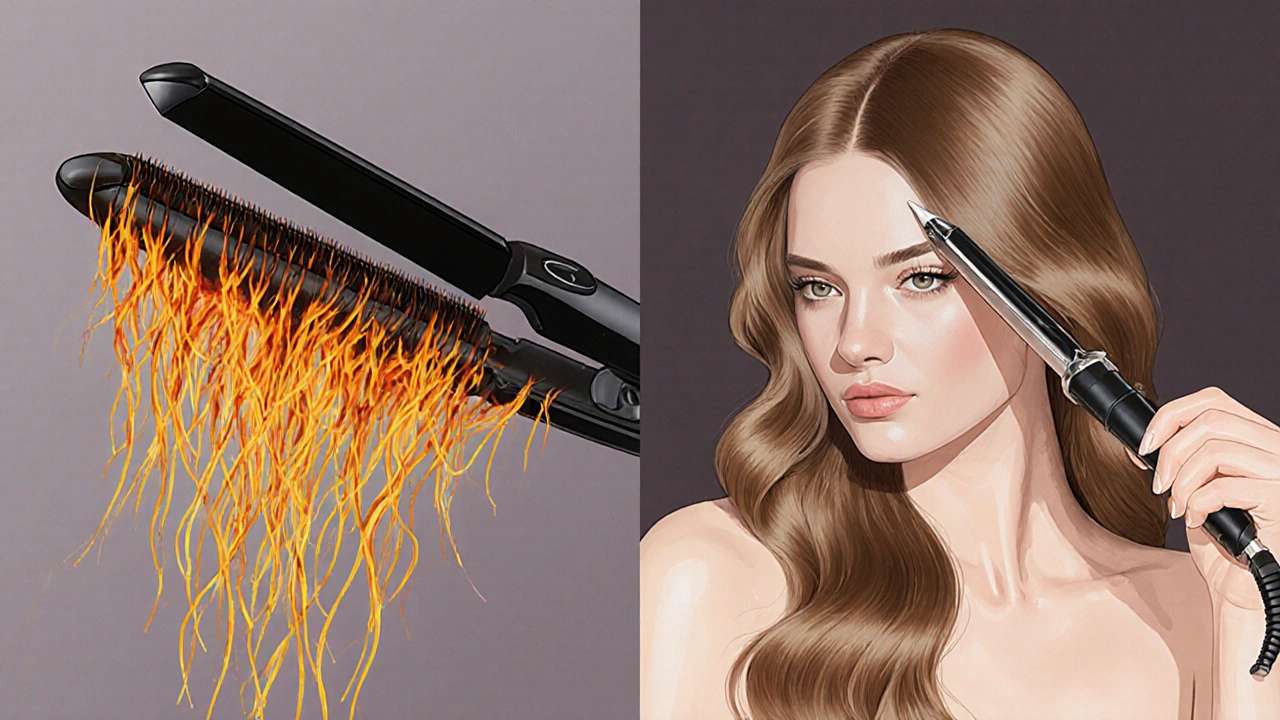
What Happens If You Overheat Them?
If you’ve already used high heat on your extensions, here’s what you might see:- Strands feel rough or straw-like
- Color looks dull or faded
- Clips start to loosen or bend
- Hair sheds more than usual when brushing
Once the cuticle is damaged, it can’t be repaired. You can’t reverse it with deep conditioners or oils. The best you can do is slow down further damage by switching to low-heat styling and using protein treatments every few weeks.
How Long Do Heat-Styled Extensions Last?
With proper care-including limited heat use, gentle brushing, and storage-human hair clip-ins can last 6 to 12 months. But if you style them daily with high heat, you might see them degrade in just 2 to 3 months. One client in Asheville told me she used her extensions every day with a flat iron at 400°F. After four months, they looked like they’d been through a sandstorm. She replaced them early and spent more than she would’ve if she’d just used lower heat from the start.Alternatives to Heat Styling
If you want to avoid heat altogether, try these options:- Use foam rollers or flexi rods overnight to create waves without heat.
- Twist or braid damp extensions and let them air dry for natural texture.
- Use texturizing sprays or sea salt sprays for volume and hold.
- Try a diffuser on your blow dryer for gentle drying without direct heat.
These methods are slower, sure-but they’re kinder to your extensions and your wallet.
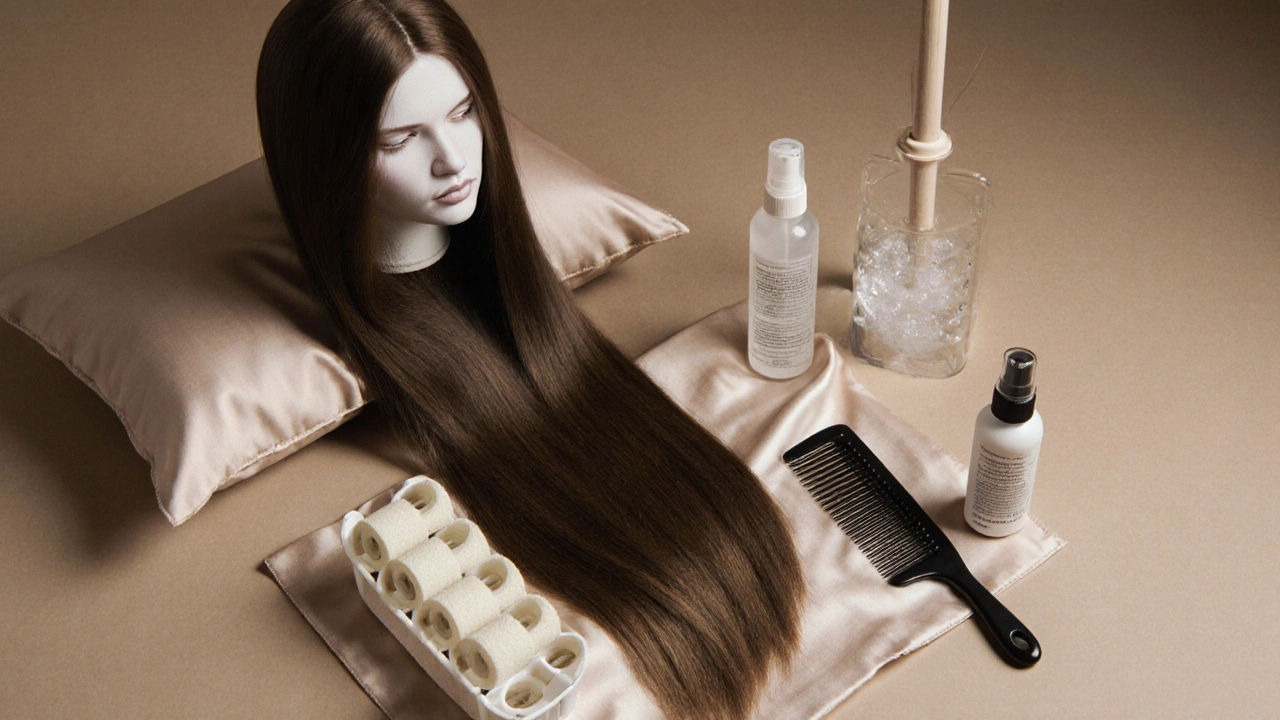
Can You Style Extensions While They’re in Your Hair?
Technically, yes. But it’s risky. When extensions are clipped in, your natural hair is underneath, and the heat can transfer to your scalp or damage your own strands. Plus, the clips can get hot and burn your skin. It’s safer to remove the extensions, style them on a mannequin or towel, then clip them back in once they’ve cooled.Also, don’t try to style around the clips. The metal can conduct heat and melt the plastic parts of the clip, making them useless. Always style the hair strands only.
How to Tell If Your Extensions Are Human Hair
If you’re not sure what you’re working with, do a quick burn test (in a safe, ventilated area):- Take one strand and hold it with tweezers over a flame.
- Human hair smells like burning hair and turns to ash.
- Synthetic hair melts, smells like plastic, and forms a hard bead.
Or check the product label. Reputable brands will clearly state "100% human hair" or "Remy human hair." If it just says "hair extension" without details, assume it’s synthetic until proven otherwise.
Final Tip: Less Is More
You don’t need to style your extensions every day. Many people buy them to save time, not to add more styling to their routine. Let them air dry naturally when you can. Use them for special occasions. Rotate between two sets so one can rest while the other’s in use. Your extensions-and your wallet-will thank you.Can I use a flat iron on synthetic clip-in extensions?
No, you should never use a flat iron on synthetic clip-in extensions. Synthetic fibers melt at low temperatures-often below 180°F. Even a low heat setting can cause irreversible damage, leaving your extensions sticky, frizzy, or permanently misshapen. Stick to heat-free styling like braiding or air-drying if you have synthetic hair.
How often can I heat style my human hair clip-ins?
Limit heat styling to 1-2 times per week at most. Daily heat use, even at low temperatures, causes cumulative damage. If you style them every day, expect them to last only 2-4 months instead of 6-12. Always use a heat protectant and keep your tool below 350°F.
Should I remove clip-ins before using a blow dryer?
Yes, it’s safer to remove them before blow-drying. The clips can get hot and damage the plastic, and the heat can transfer to your scalp. Plus, styling them separately lets you control the heat better and avoid tugging on your natural hair. Let them dry flat on a towel or wig stand after washing.
Can I curl clip-in extensions if they’re already clipped in?
You can, but it’s not recommended. Curling while they’re clipped in risks burning your scalp or damaging your natural hair. The clips can also get hot and warp. It’s easier and safer to remove the extensions, style them on a flat surface, let them cool, then re-clip them in.
What’s the best heat protectant for clip-in extensions?
Look for a lightweight, alcohol-free spray with natural oils like argan, coconut, or jojoba. Brands like Olaplex No. 9, It’s a 10 Miracle Leave-In, or TRESemmé Thermal Creations Heat Protectant work well. Avoid heavy silicones-they build up and make extensions look greasy over time. Always spray evenly and let it dry before styling.
Next Steps: How to Extend the Life of Your Extensions
If you want your clip-ins to last longer, do these three things:- Wash them every 8-10 wears with sulfate-free shampoo and cold water.
- Store them flat or on a wig stand-never crumpled in a drawer.
- Use a silk or satin pillowcase when sleeping with them in (if you do).
With a little care, your extensions can look brand new for over a year. And that’s worth a few extra minutes of prep before you style them.

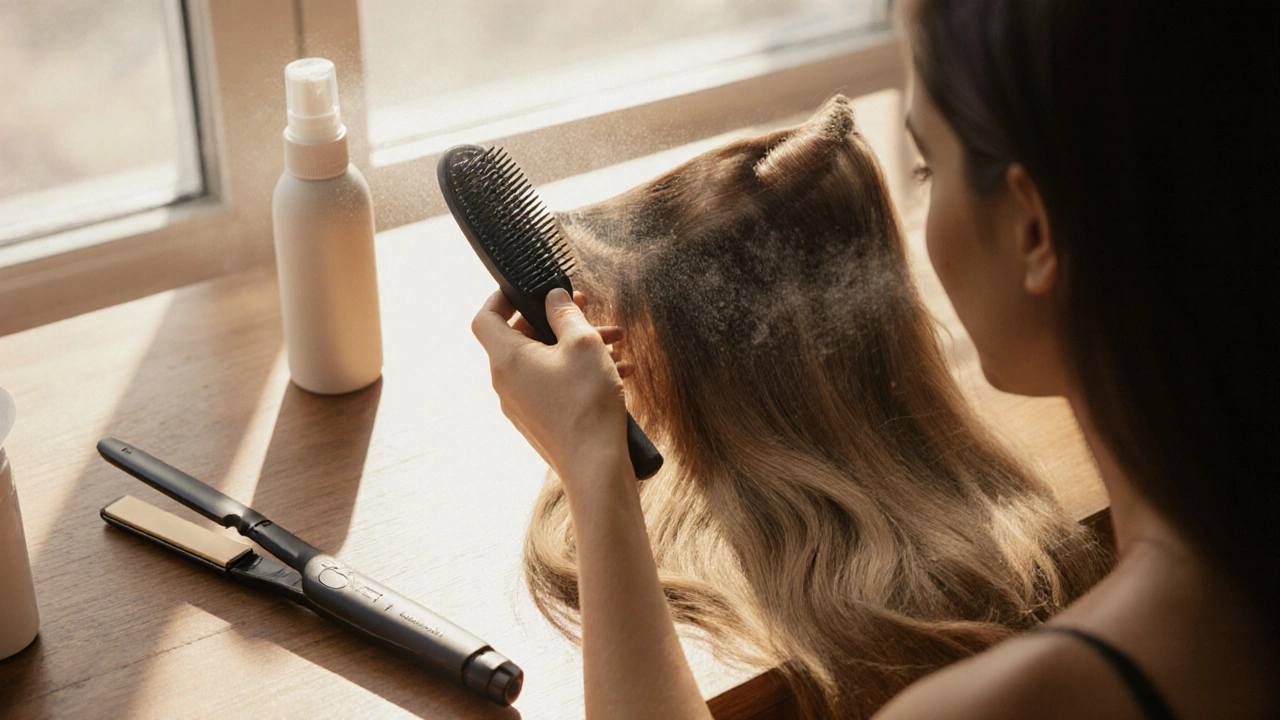
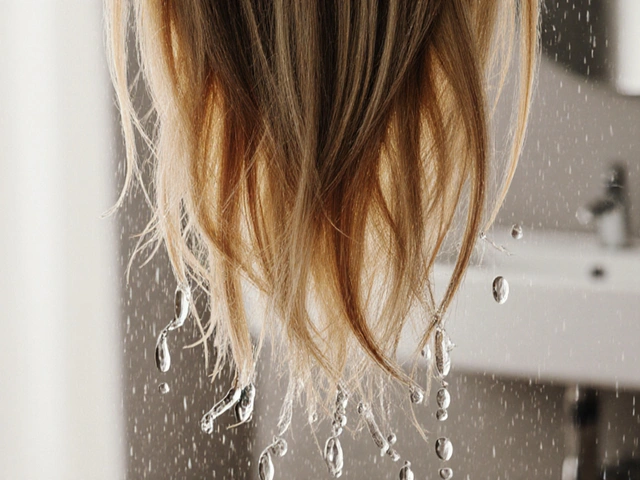



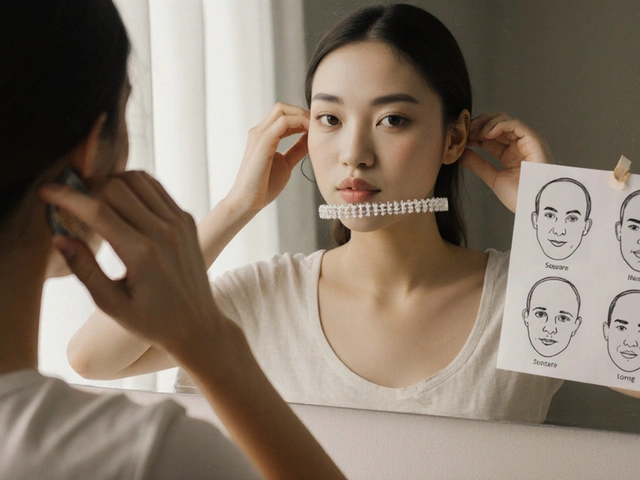
Nikhil Gavhane
November 18, 2025 AT 04:46Just wanted to say this guide saved my extensions. I used to crank my flat iron to 400°F thinking more heat = better curls. Turned my $150 set into a frizzy mess in two months. Now I stick to 320°F and they still look brand new after 8 months. Seriously, less heat is more love.
Also, storing them flat on a wig stand? Game changer. No more tangled nightmares.
Rajat Patil
November 20, 2025 AT 00:09Thank you for this detailed explanation. It is very helpful. I have been using synthetic extensions and I did not know they could melt. I will now avoid heat completely. I appreciate the advice on air drying and braiding. This is a kind and thoughtful guide.
deepak srinivasa
November 20, 2025 AT 01:19Wait, so if I use a diffuser on low, is that still considered heat exposure? I’ve been using mine on my extensions while they’re clipped in because it’s faster. Should I stop? Also, what’s the science behind why silicone builds up? Is it just the molecular weight or is there something about the cuticle structure?
pk Pk
November 20, 2025 AT 14:56Listen up, everyone. You don’t need to be scared of heat. You need to be smart. I’ve been using human hair extensions for 3 years, daily, at 340°F. They look better than my own hair. But here’s the catch: I use a heat protectant every single time. I don’t skip it. I don’t rush. I let them cool. I store them right. That’s not magic, that’s discipline.
And if you’re still using synthetic? Just buy human hair. It’s cheaper in the long run. Stop wasting money.
NIKHIL TRIPATHI
November 22, 2025 AT 09:40I used to think the burn test was a myth until I tried it. Took a strand from my new set, lit it with a lighter (outside, don’t be dumb), and it melted like plastic. Turned out they were 70% synthetic even though the label said 'human hair blend.'
Now I only buy from brands that show real photos of the hair cuticle under a microscope. If they don’t, I don’t buy. Also, washing in cold water? Yes. Always. I use a silk scrunchie to tie them up when storing. Tiny things, big difference.
Shivani Vaidya
November 22, 2025 AT 13:23Heat styling extensions daily is not worth the cost. The damage is irreversible. I have learned this through experience. I now use foam rollers overnight. My hair looks natural. My extensions last longer. I am satisfied with this method. I recommend it to others.
Rubina Jadhav
November 23, 2025 AT 10:11I never knew you should remove them before blow drying. I always just did it while they were in. My scalp got burned once. Now I’m careful. Thanks for the tip.
sumraa hussain
November 25, 2025 AT 03:38Okay so I just tried the burn test… and my extensions? They melted. Like, full-on plastic bubble. I thought I bought human hair. I did NOT. I feel betrayed. Like I paid $200 for a science experiment gone wrong. I’m going to scream into a pillow. Then I’m going to write a 5-star review for this post. This is the most useful thing I’ve read all year. I’m not even kidding. My extensions are now in a drawer. I’m going braids only. Forever. Or until I find a trustworthy brand. Someone please send me a link. I’m desperate.
Raji viji
November 26, 2025 AT 23:48LMAO you people are so naive. You think 350°F is safe? That’s just the marketing lie they feed you so you keep buying new extensions every 3 months. Real talk: even human hair starts to degrade at 300°F. You think your 'Remy' hair is virgin? Nah. It’s recycled from a wig factory in China. The 'cuticles aligned' thing? Bullshit. They glue them together. The only way to make extensions last is to never touch them with heat. Ever. Use clip-in curls. Use spray. Use your hands. Stop being lazy. Your wallet and your hair will thank you. And if you still use heat? You’re part of the problem.
Rajashree Iyer
November 27, 2025 AT 14:11Heat is not just a tool. It is a metaphor. We burn our extensions because we burn ourselves-trying to be someone else, someone smoother, someone longer, someone brighter. The hair becomes a mirror of our desperation. Each curl, each straightened strand, a silent plea: 'See me. I am enough.'
But the truth? The truth is in the silence between the blow dryer’s hum and the rustle of the silk pillowcase. The truth is in the air-dried waves that grow from patience, not power. Your extensions are not hair. They are memories you’ve borrowed. Treat them gently. Because in the end, the only thing hotter than a flat iron… is the ache of letting go.